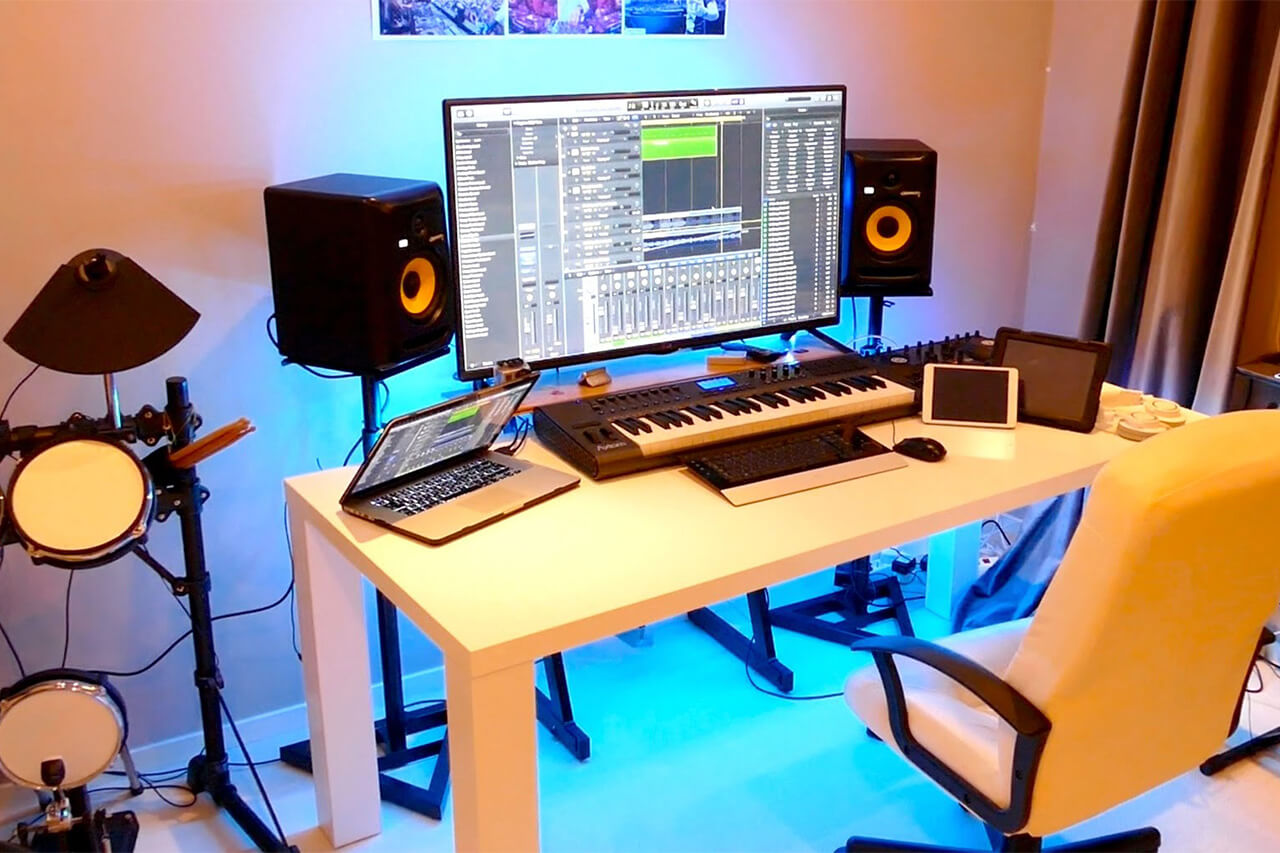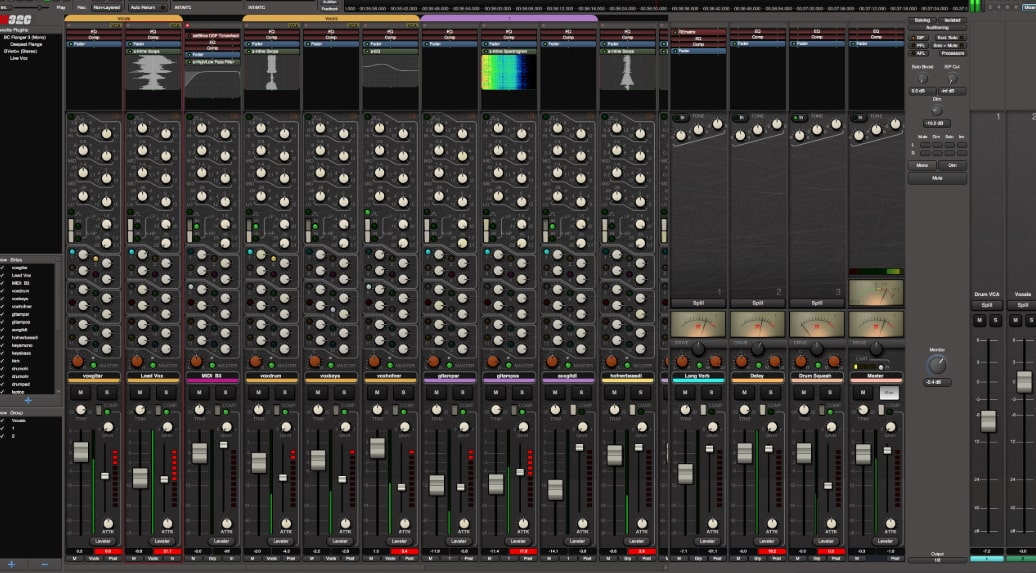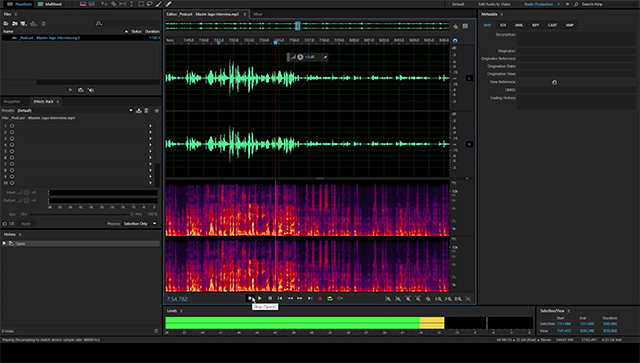Getting Started with SoundCloud: Setting Up Your Account and Studio
When it comes to making a song on SoundCloud, setting up a professional account and studio is crucial for success. A well-crafted profile is essential for establishing credibility and attracting listeners. To create a professional SoundCloud account, start by choosing a unique username that reflects your artist name or brand. This will help you stand out and make it easier for fans to find you. Next, upload a high-quality profile picture and bio that showcases your personality and style.
In addition to setting up your account, you’ll also need to invest in some basic equipment to start producing music. This includes a computer, digital audio workstation (DAW), and audio interface. A DAW is the software that you’ll use to record, edit, and produce your music. Popular options include Ableton Live, FL Studio, and Logic Pro X. An audio interface is a device that connects your instruments and microphones to your computer, allowing you to record high-quality audio.
When choosing a DAW, consider the type of music you want to produce and the level of complexity you’re comfortable with. For example, Ableton Live is a popular choice for electronic music producers, while Logic Pro X is a favorite among hip-hop and pop producers. Once you’ve selected a DAW, take some time to familiarize yourself with its interface and features. This will help you to work more efficiently and effectively as you start producing your music.
By setting up a professional SoundCloud account and studio, you’ll be well on your way to making a song on SoundCloud that showcases your talent and creativity. Remember to keep your profile up-to-date and engaging, and don’t be afraid to experiment with different equipment and software as you continue to produce and release music.
Choosing the Right Digital Audio Workstation (DAW) for Your Music Production Needs
When it comes to making a song on SoundCloud, choosing the right digital audio workstation (DAW) is a crucial step in the music production process. A DAW is the software that allows you to record, edit, and produce your music, and there are many options available, each with its own unique features and benefits.
Ableton Live, FL Studio, and Logic Pro X are three of the most popular DAWs used by music producers today. Ableton Live is known for its flexibility and live performance capabilities, making it a favorite among electronic music producers. FL Studio, on the other hand, is a popular choice for hip-hop and pop producers, thanks to its user-friendly interface and powerful beat-making tools. Logic Pro X is a professional-grade DAW that offers advanced features and a high-end sound, making it a favorite among producers who want to create high-quality music.
When choosing a DAW, consider the type of music you want to produce and the level of complexity you’re comfortable with. If you’re just starting out, you may want to consider a more user-friendly DAW like FL Studio or Ableton Live. If you’re looking for a more advanced DAW with professional-grade features, Logic Pro X may be the way to go.
In addition to considering the type of music you want to produce, you should also think about the hardware and software requirements of each DAW. Make sure your computer meets the minimum system requirements for the DAW you choose, and consider investing in a MIDI keyboard or controller to enhance your music production experience.
Ultimately, the right DAW for you will depend on your individual needs and preferences. By considering the features, benefits, and system requirements of each DAW, you can make an informed decision and start making music on SoundCloud today.
Creating a Catchy Melody and Chord Progression: The Foundation of a Great Song
When it comes to making a song on SoundCloud, creating a catchy melody and chord progression is essential for capturing the listener’s attention and keeping them engaged. A memorable melody can make or break a song, and a well-crafted chord progression can add depth and emotion to your music.
So, how do you create a catchy melody and chord progression? One approach is to use online tools and resources, such as chord charts and melody generators. These tools can help you experiment with different chord progressions and melodies, and find inspiration for your music.
Another approach is to draw from your own experiences and emotions. Think about what inspires you, what moves you, and what you want to express through your music. Use these feelings and ideas to craft a melody and chord progression that is unique and authentic.
When creating a melody, consider the following tips:
- Keep it simple: A simple, catchy melody is often more effective than a complex one.
- Use repetition: Repeat certain melodic phrases or motifs to create a sense of unity and coherence.
- Experiment with rhythm: Play with different rhythms and time signatures to add interest and variety to your melody.
When creating a chord progression, consider the following tips:
- Use chord charts: Look up chord charts for your favorite songs and analyze the chord progressions.
- Experiment with different chord voicings: Try using different chord voicings to add texture and interest to your chord progression.
- Keep it simple: A simple, catchy chord progression is often more effective than a complex one.
By following these tips and using online tools and resources, you can create a catchy melody and chord progression that will help your song stand out on SoundCloud.
Adding Depth and Texture with Virtual Instruments and Effects
When it comes to making a song on SoundCloud, adding depth and texture to your music is crucial for creating a professional-sounding track. One way to achieve this is by using virtual instruments and effects. Virtual instruments are software-based instruments that can be used to create a wide range of sounds, from drums and basses to synths and pianos. Effects, on the other hand, are used to enhance and manipulate the sound of your virtual instruments.
There are many types of virtual instruments and effects available, each with its own unique characteristics and uses. Some popular virtual instruments include virtual drum machines, virtual basses, and virtual synthesizers. Effects, such as reverb, delay, and distortion, can be used to add depth and texture to your music.
To use virtual instruments and effects in your music production, you’ll need to have a digital audio workstation (DAW) that supports these features. Most DAWs, including Ableton Live, FL Studio, and Logic Pro X, have a wide range of virtual instruments and effects built-in.
Here are some tips for using virtual instruments and effects in your music production:
- Experiment with different virtual instruments and effects to find the sounds that work best for your music.
- Use virtual instruments to create a solid foundation for your track, and then add effects to enhance and manipulate the sound.
- Don’t overdo it – too many virtual instruments and effects can make your track sound cluttered and overwhelming.
Some popular plugins for adding depth and texture to your music include:
- Reverb: adds a sense of space and distance to your sound
- Delay: creates a sense of repetition and rhythm
- Distortion: adds a gritty, overdriven sound to your music
By using virtual instruments and effects in your music production, you can add depth and texture to your tracks and create a professional-sounding mix.
Recording and Editing Vocals: Tips for a Professional Sound
When it comes to making a song on SoundCloud, high-quality vocal recordings are essential for creating a professional-sounding track. In this section, we’ll discuss the importance of choosing the right microphone, setting up a home recording studio, and using editing software to enhance your vocals.
Choosing the Right Microphone
The type of microphone you use can greatly affect the quality of your vocal recordings. There are several types of microphones available, including condenser microphones, dynamic microphones, and ribbon microphones. Condenser microphones are known for their high sensitivity and are often used for recording vocals. Dynamic microphones are more durable and are often used for recording loud instruments. Ribbon microphones are known for their warm and smooth sound and are often used for recording vocals and acoustic instruments.
Setting Up a Home Recording Studio
To record high-quality vocals, you’ll need to set up a home recording studio. This can be as simple as a quiet room with a microphone and a computer, or as complex as a fully-equipped studio with acoustic treatment and high-end equipment. Regardless of the complexity of your studio, there are several things you can do to ensure that your vocals sound their best. First, choose a quiet room with minimal background noise. Next, invest in a good pair of monitor speakers and a comfortable pair of headphones. Finally, use acoustic treatment to reduce echo and reverberation in your studio.
Using Editing Software to Enhance Your Vocals
Once you’ve recorded your vocals, you can use editing software to enhance their sound. There are several types of editing software available, including digital audio workstations (DAWs) and plug-ins. DAWs are software programs that allow you to record, edit, and mix your audio files. Plug-ins are software programs that can be used to enhance the sound of your vocals. Some popular plug-ins for vocals include compressors, equalizers, and reverb units.
Tips for Recording and Editing Vocals
- Use a high-quality microphone to record your vocals.
- Set up a quiet and comfortable home recording studio.
- Use editing software to enhance the sound of your vocals.
- Experiment with different plug-ins and effects to find the sound that works best for your music.
By following these tips and using the right equipment and software, you can create high-quality vocal recordings that will help your song stand out on SoundCloud.
Mixing and Mastering Your Track: The Final Touches
When it comes to making a song on SoundCloud, mixing and mastering are the final steps in the music production process. Mixing involves blending the different tracks in your song to create a balanced and cohesive sound, while mastering involves preparing your song for distribution and playback on different platforms.
Mixing Your Track
Mixing is a critical step in the music production process, as it can make or break the sound of your song. A good mix can bring out the best in your music, while a bad mix can make it sound muddy and unprofessional. To mix your track, start by adjusting the levels of each track to create a balanced sound. Then, use EQ to adjust the tone of each track and make sure they sit well together in the mix. Finally, use compression to control the dynamics of each track and create a cohesive sound.
Mastering Your Track
Mastering is the final step in the music production process, and it involves preparing your song for distribution and playback on different platforms. To master your track, start by using a mastering plugin to adjust the EQ and compression of your song. Then, use a limiter to prevent your song from clipping and distorting. Finally, use a stereo widener to enhance the stereo image of your song and make it sound more immersive.
Using Online Mastering Services
If you’re not experienced in mixing and mastering, you can use online mastering services to give your track a professional finish. These services use advanced algorithms and expert engineers to master your track and make it sound its best. Some popular online mastering services include SoundCloud’s own mastering service, as well as third-party services like LANDR and Mastered for iTunes.
Tips for Mixing and Mastering
- Use a reference track to compare your mix to a professional mix.
- Use EQ to adjust the tone of each track and make sure they sit well together in the mix.
- Use compression to control the dynamics of each track and create a cohesive sound.
- Use a limiter to prevent your song from clipping and distorting.
- Use a stereo widener to enhance the stereo image of your song and make it sound more immersive.
By following these tips and using online mastering services, you can give your track a professional finish and make it sound its best on SoundCloud.
Uploading and Sharing Your Music on SoundCloud: Getting Your Music Heard
Once you’ve created and mixed your song, it’s time to share it with the world. SoundCloud is a great platform for sharing your music, with a large community of music lovers and a wide range of features to help you get your music heard.
Choosing the Right Tags and Descriptions
When uploading your music to SoundCloud, it’s essential to choose the right tags and descriptions to help people find your music. Use relevant keywords that describe your music, such as genre, mood, and tempo. You can also add descriptions to your tracks to provide more context and information about your music.
Creating Eye-Catching Artwork
Your artwork is the first thing people will see when they come across your music on SoundCloud, so make sure it’s eye-catching and professional. Use a high-quality image that represents your music and brand, and make sure it’s the right size and format for SoundCloud.
Engaging with the SoundCloud Community
SoundCloud is a community-driven platform, and engaging with other users is essential for getting your music heard. Respond to comments and messages, share other people’s music, and participate in discussions to build relationships and grow your following.
Promoting Your Music
There are many ways to promote your music on SoundCloud, including sharing your tracks on social media, collaborating with other artists, and running ads. You can also use SoundCloud’s built-in features, such as SoundCloud Premier and SoundCloud Pro, to promote your music and reach a wider audience.
Tips for Uploading and Sharing Your Music
- Use relevant keywords and descriptions to help people find your music.
- Create eye-catching artwork that represents your music and brand.
- Engage with the SoundCloud community to build relationships and grow your following.
- Promote your music using social media, collaborations, and ads.
- Use SoundCloud’s built-in features to promote your music and reach a wider audience.
By following these tips and using SoundCloud’s features, you can get your music heard and build a following on the platform.
Taking Your Music to the Next Level: Advanced SoundCloud Features and Strategies
Once you’ve uploaded and shared your music on SoundCloud, it’s time to take your music to the next level. SoundCloud offers a range of advanced features and strategies that can help you promote your music, engage with your audience, and track your performance.
Using SoundCloud Premier
SoundCloud Premier is a feature that allows you to monetize your music on SoundCloud. With SoundCloud Premier, you can earn money from your music through ads, subscriptions, and sales. To use SoundCloud Premier, you’ll need to meet certain requirements, such as having a minimum number of followers and plays.
Using SoundCloud Pro
SoundCloud Pro is a paid subscription service that offers a range of advanced features and tools for music producers. With SoundCloud Pro, you can upload more tracks, get more storage space, and access advanced analytics and insights. You can also use SoundCloud Pro to schedule your uploads and share your music with other users.
Using SoundCloud for Artists
SoundCloud for Artists is a feature that allows you to manage your music and engage with your audience on SoundCloud. With SoundCloud for Artists, you can track your performance, engage with your fans, and share your music with other users. You can also use SoundCloud for Artists to access advanced analytics and insights, and to get feedback from your audience.
Using Analytics to Track Your Performance
SoundCloud offers a range of analytics and insights that can help you track your performance and adjust your strategy. With SoundCloud analytics, you can track your plays, likes, and comments, and see how your music is performing over time. You can also use SoundCloud analytics to track your audience and see who is listening to your music.
Tips for Taking Your Music to the Next Level
- Use SoundCloud Premier to monetize your music and earn money from your tracks.
- Use SoundCloud Pro to access advanced features and tools, and to upload more tracks and get more storage space.
- Use SoundCloud for Artists to manage your music and engage with your audience, and to access advanced analytics and insights.
- Use SoundCloud analytics to track your performance and adjust your strategy.
- Engage with your audience and respond to comments and messages.
By using these advanced features and strategies, you can take your music to the next level and achieve success on SoundCloud.





